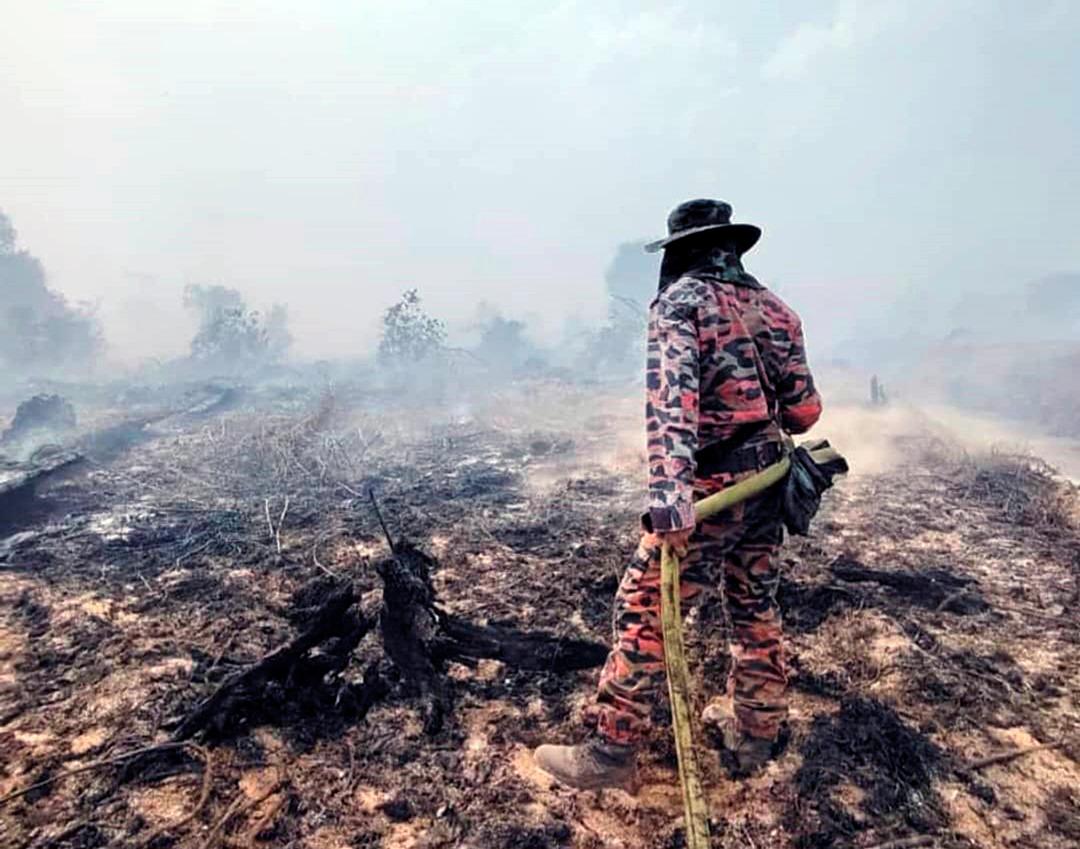MIRI: Sarawak is currently facing a worsening crisis as prolonged drought conditions and widespread wildfires converge, posing a significant threat to lives and livelihoods across the northern border region adjoining Kalimantan.
In Ba’kelalan, nestled along the Sarawak-Kalimantan mountain range, communities are grappling with a severe shortage of drinking water, according to its state assemblyman Baru Bian.
“Clean water sources from underground wells have run dry, and gravity feed systems have also ceased functioning as the drought worsens in these populated areas lacking water treatment plants,” he stated.
“Even in localities with rural water treatment plants, the supply is depleting due to the extreme dry weather.”
Baru, a former works minister, highlighted the severity of the situation: “I have visited some of the affected communities, and the ground situation is indeed critical as drinking water is depleting to crisis level. The communities lack adequate water for their basic consumption.”
He has alerted state authorities to prepare for emergency water supply deployment, but logistical challenges persist.
The nearest major water treatment plant is in Lawas town, a demanding seven-hour journey across rugged and mountainous terrain.
As water scarcity intensifies, wildfires continue to flare across Sarawak, exacerbating environmental and public health risks.
The Sarawak Fire and Rescue Department confirmed yesterday that four major fires are still burning across various districts: Marudi in the north, Mukah and Sibu in central Sarawak, and Samarahan in the south.
In Marudi, the largest of the wildfires, first reported four days ago, has expanded exponentially.
What began as a blaze across 10 acres of plantation and forest in Logan Unga has now spread to over 82 hectares—approximately the size of 200 football fields.
“This is the fifth day we have deployed more firefighting teams from Marudi town to the site,” the department reported.
“Accessibility is difficult as the fire has spread into a forest and peatland. As of this morning, the area on fire is still more than 80.15 hectares.”
The fire reportedly originated in an oil palm and pineapple plantation before spreading into surrounding forest and peatland areas, fuelled by dry and windy conditions.
In Mukah district, firefighters continue to battle a persistent forest fire that began six days ago. Although they have successfully extinguished over two hectares, another two hectares remain ablaze—equivalent to roughly five football fields. In southern Sarawak, a landfill fire in Kota Samarahan has now engulfed at least four hectares, or about 10 football fields, posing health hazards due to smoke and airborne pollutants.
Meanwhile, in Sibu district, the Tanjung Manis landfill is also burning, with firefighters attempting to control flames across two hectares of waste—an area approximately the size of five football fields.
The Sarawak government placed the entire state on red alert for wildfires and haze last week, bracing for more hotspots to emerge if current dry conditions persist. While the dry spell shows little sign of easing, coordinated efforts are underway to manage the impact and protect affected communities.









